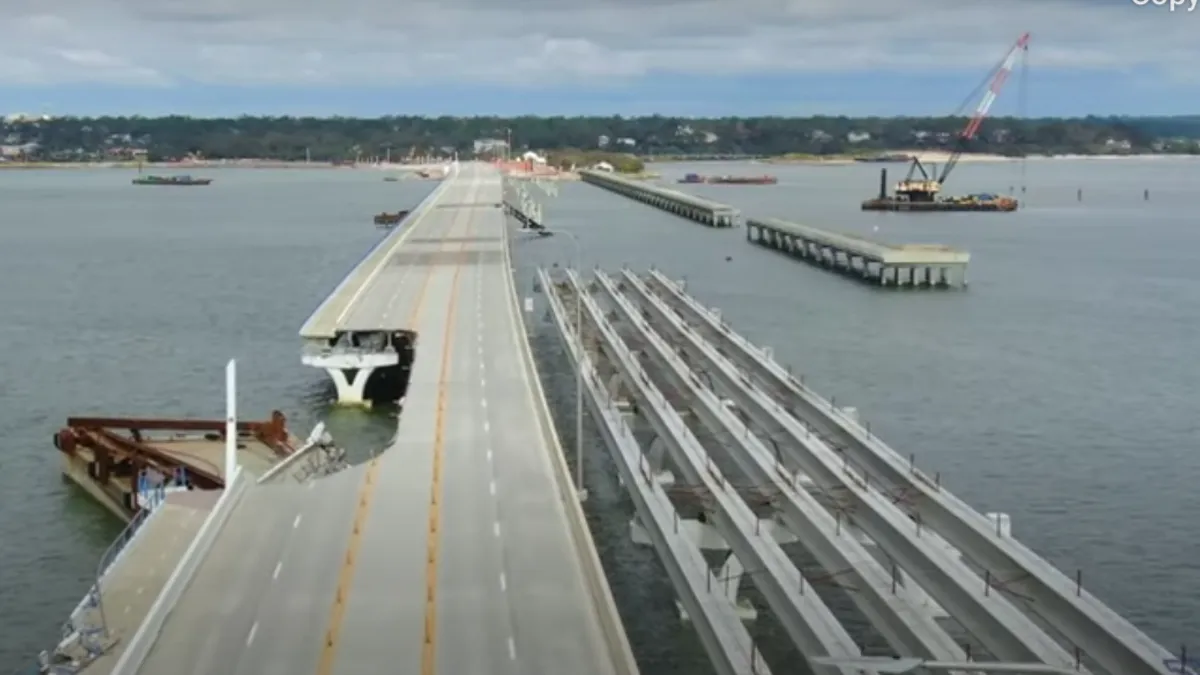Dive Brief:
- The Florida Department of Transportation (FDOT) is asking Skanska USA to cover toll loss the state might incur because of the shutdown of the Pensacola Bay Bridge that the contractor’s Civil Southwest barges damaged last month during Hurricane Sally.
- Florida Gov. Ron DeSantis suspended tolls on nearby Garcon Point Bridge, which is privately owned, while FDOT continues inspection of the Pensacola bridge. An initial assessment found that required repairs could take as long as six months.
- Jason Peters, FDOT director of transportation operations, said in a letter to Skanska that the department will pursue recovery of lost tolls if the Garcon Point Bridge owners request them.
Dive Insight:
FDOT data indicates that the number of vehicles crossing Garcon Point lept from 6,500 per day to 31,000 per day following the closure of the Pensacola Bay Bridge, the Pensacola News Journal reported. Garcon Point is the only other bridge crossing Pensacola Bay.
If the Skanka barges hadn’t rendered the Pensacola Bay Bridge impassable, “there would have been no need to suspend the tolls,” Peters wrote.
A total of 22 barges broke free during the hurricane, causing damage to the Pensacola Bay Bridge and surrounding public and private property. Prior to any new repair work, Skanska needs to demolish the damaged piers and beams. In the meantime, FDOT said the contractor has begun construction of piers and beams to be placed on site when demolition is complete.
Problems around the bridge may be ongoing. Recent heavy rainfall reportedly caused large amounts of red clay to flow into the bay from the bridge site, according to ENR. Skanska stated that “sediment runoff consisting of clean fill sand washed past the project’s perimeter,” adding that the contractor was working to ensure better drainage and erecting barriers around the perimeter. The Florida Department of Environmental Protection is investigating.
Skanska started construction of the new spans for the Pensacola Bay Bridge, also known as Three Mile Bridge, in 2017. Before the barge damage shut it down, there were four lanes of traffic — two eastbound and two westbound — using one new span, completed in 2019. The plan is to switch westbound traffic to the second new span when it is complete in 2021.














